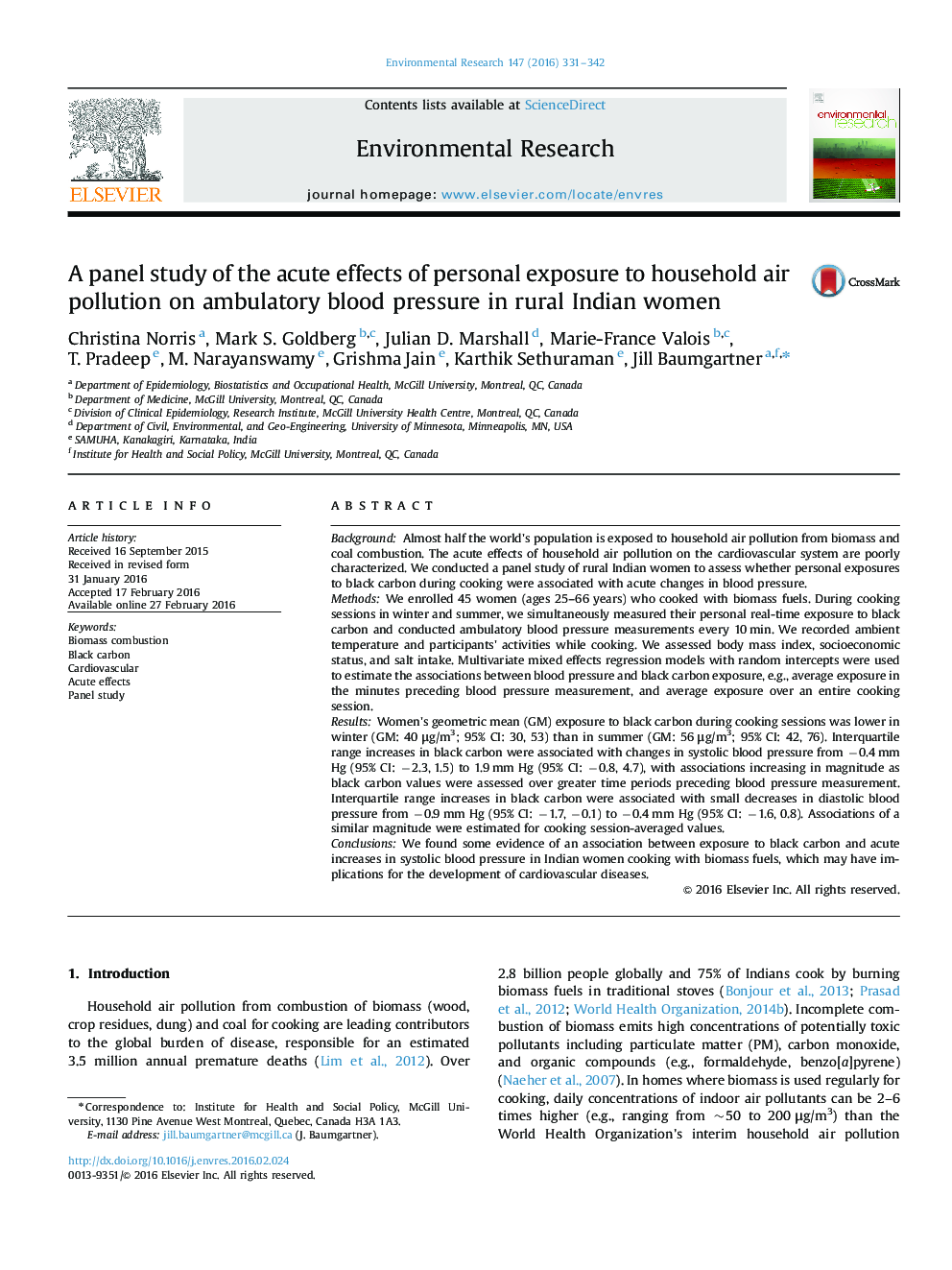| Article ID | Journal | Published Year | Pages | File Type |
|---|---|---|---|---|
| 6351738 | Environmental Research | 2016 | 12 Pages |
â¢The acute vascular effects of household air pollution are understudied and may contribute to overall cardiovascular risk.â¢Women cooking with biomass fuels in rural India are exposed to high concentrations of black carbon during cooking sessions.â¢Exposure to black carbon from biomass combustion may be associated with small increases in ambulatory systolic blood pressure within minutes of exposure during cooking sessions.
BackgroundAlmost half the world's population is exposed to household air pollution from biomass and coal combustion. The acute effects of household air pollution on the cardiovascular system are poorly characterized. We conducted a panel study of rural Indian women to assess whether personal exposures to black carbon during cooking were associated with acute changes in blood pressure.MethodsWe enrolled 45 women (ages 25-66 years) who cooked with biomass fuels. During cooking sessions in winter and summer, we simultaneously measured their personal real-time exposure to black carbon and conducted ambulatory blood pressure measurements every 10 min. We recorded ambient temperature and participants' activities while cooking. We assessed body mass index, socioeconomic status, and salt intake. Multivariate mixed effects regression models with random intercepts were used to estimate the associations between blood pressure and black carbon exposure, e.g., average exposure in the minutes preceding blood pressure measurement, and average exposure over an entire cooking session.ResultsWomen's geometric mean (GM) exposure to black carbon during cooking sessions was lower in winter (GM: 40 μg/m3; 95% CI: 30, 53) than in summer (GM: 56 μg/m3; 95% CI: 42, 76). Interquartile range increases in black carbon were associated with changes in systolic blood pressure from â0.4 mm Hg (95% CI: â2.3, 1.5) to 1.9 mm Hg (95% CI: â0.8, 4.7), with associations increasing in magnitude as black carbon values were assessed over greater time periods preceding blood pressure measurement. Interquartile range increases in black carbon were associated with small decreases in diastolic blood pressure from â0.9 mm Hg (95% CI: â1.7, â0.1) to â0.4 mm Hg (95% CI: â1.6, 0.8). Associations of a similar magnitude were estimated for cooking session-averaged values.ConclusionsWe found some evidence of an association between exposure to black carbon and acute increases in systolic blood pressure in Indian women cooking with biomass fuels, which may have implications for the development of cardiovascular diseases.
